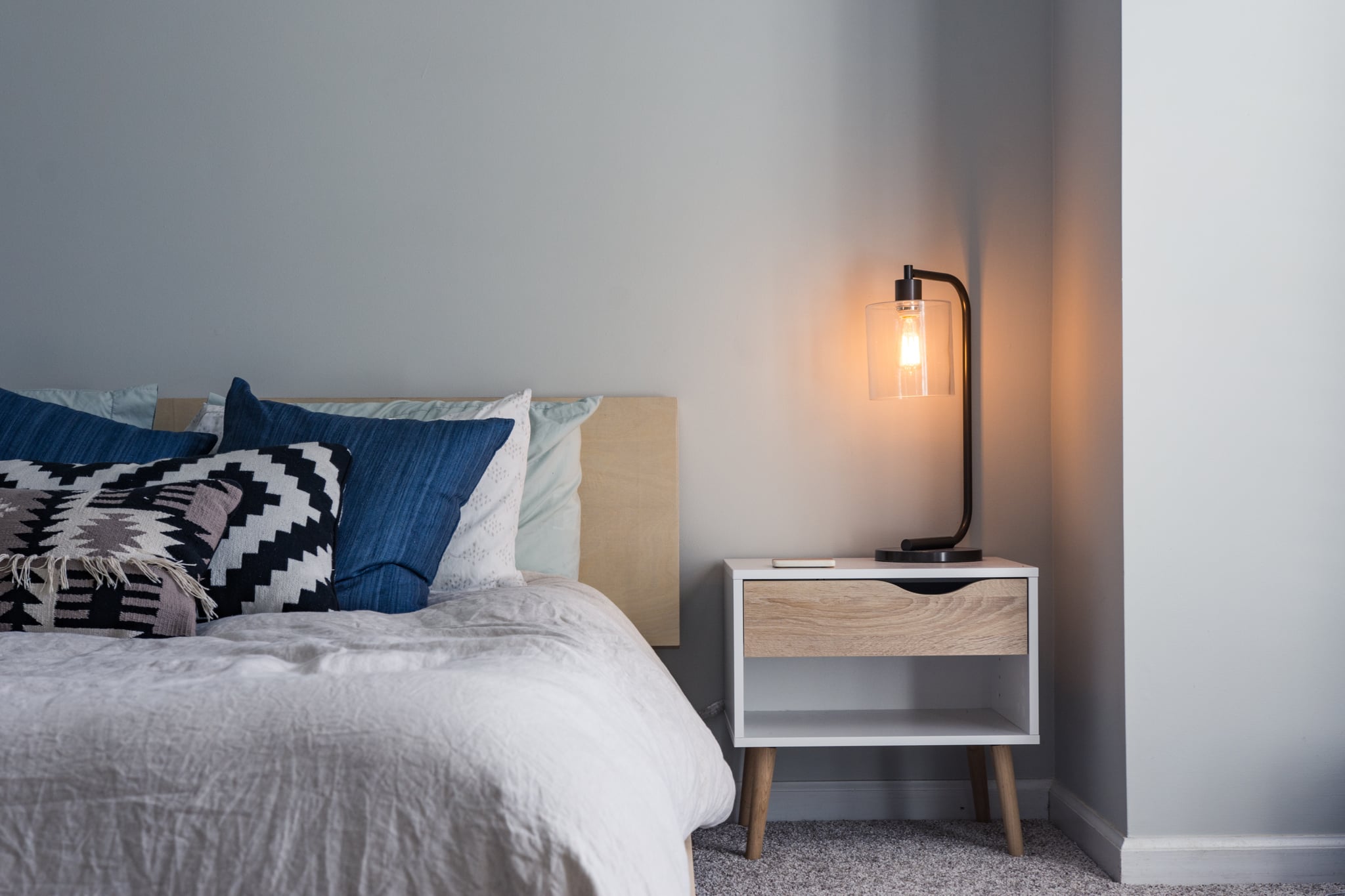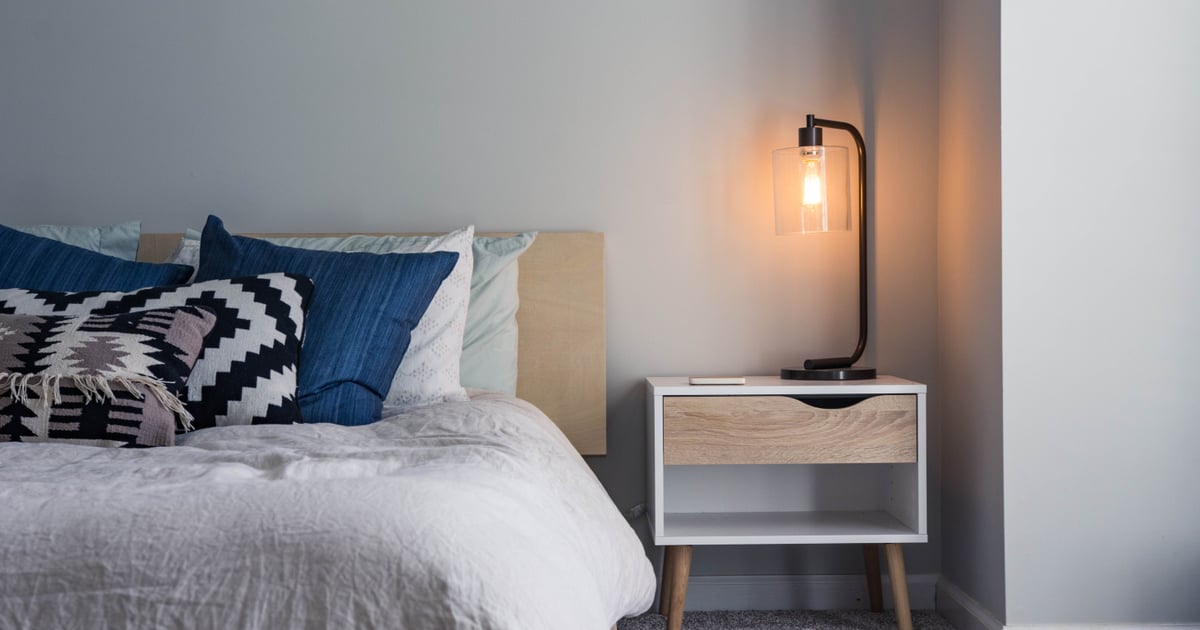
If you’re a night owl like me, the idea of falling asleep before midnight probably sounds like a pipe dream. But falling into bed in the wee hours is no way to live, either — research shows that it can take a toll on your health, and depriving your body of sleep certainly won’t help you power through your to-do list the next day. If you’ve tried and failed to drift off to sleep earlier, these expert tips can help.
1. Create a Morning Routine
It seems counterintuitive that this would be the first step, but “your rise time ‘sets the clock’ for bedtime,” Lynelle Schneeberg, MD, a sleep psychologist and fellow of the American Academy of Sleep Medicine, told POPSUGAR. Aim to wake up a few minutes earlier every few days until you’ve reached the time you’d like to be up every morning, then stick to it — even on weekends. (Dr. Schneeberg recommends sleeping no more than an hour or two later than you would on work days.)
Once you’re up, “incorporate as many clock setters into the morning routine as possible,” she said. In particular, being exposed to natural light in the morning will help set your internal clock. “Go outdoors to have coffee and breakfast (for example, on the porch or deck or patio) and take a short walk or do some stretches,” Dr. Schneeberg suggested.
2. Power Down in the Evenings
Just as light in the mornings can help jumpstart your internal clock, dialing it back can help prepare your body for sleep. “The key is to allow the body an eight-hour window during which sleep is possible,” Alex Dimitriu, MD, founder of Menlo Park Psychiatry & Sleep Medicine, told POPSUGAR. That means turning off your devices at least eight hours (and ideally more) before your intended wake time, since blue light can disrupt the production of melatonin. “In the absence of such stimulation, people inevitably get sleepy and end up getting more of the sleep they need,” he said.
Dr. Dimitriu added that it’s good to have an activity to look forward to after you shut off your electronics — some of his suggestions include reading in print, listening to audiobooks, doing guided meditation, or snuggling with a bed partner. “Consider a warm shower or tub, and keep the bedroom cool and dark,” he said. “Use dim lights at night.”
Dr. Schneeberg echoed that advice and emphasized developing a consistent bedtime routine. This should have at least four to five steps — “snack, wash face, brush teeth, put on pajamas, and read, for example,” she said. Whether you prefer a book or a podcast, finding a quiet activity to end your night is essential. “It’s important to use something relaxing and engaging until drowsiness takes over instead of lying in bed hoping to fall asleep,” Dr. Schneeberg explained.
3. Take Note of Your Energy Levels
Adjusting your sleep schedule will likely take time, so don’t lose hope or give up if you don’t see immediate results. As Dr. Dimitriu told POPSUGAR, most people don’t feel better after going to bed on time for a day or two — you’ll likely need to keep up the pattern for at least a week before you feel a positive change.
“Beyond how you feel in the morning, ask how you feel in the afternoon. This is when most people get sleepy,” Dr. Dimitriu said. “A good night of sleep minimizes this and makes it worthwhile. Most people benefit and continue to keep a healthy bedtime when they see results. So do track mood, energy, cognitive performance, or at minimum how tired you were in the afternoons, or how hard exercise is — all will trend positively with better sleep.”
